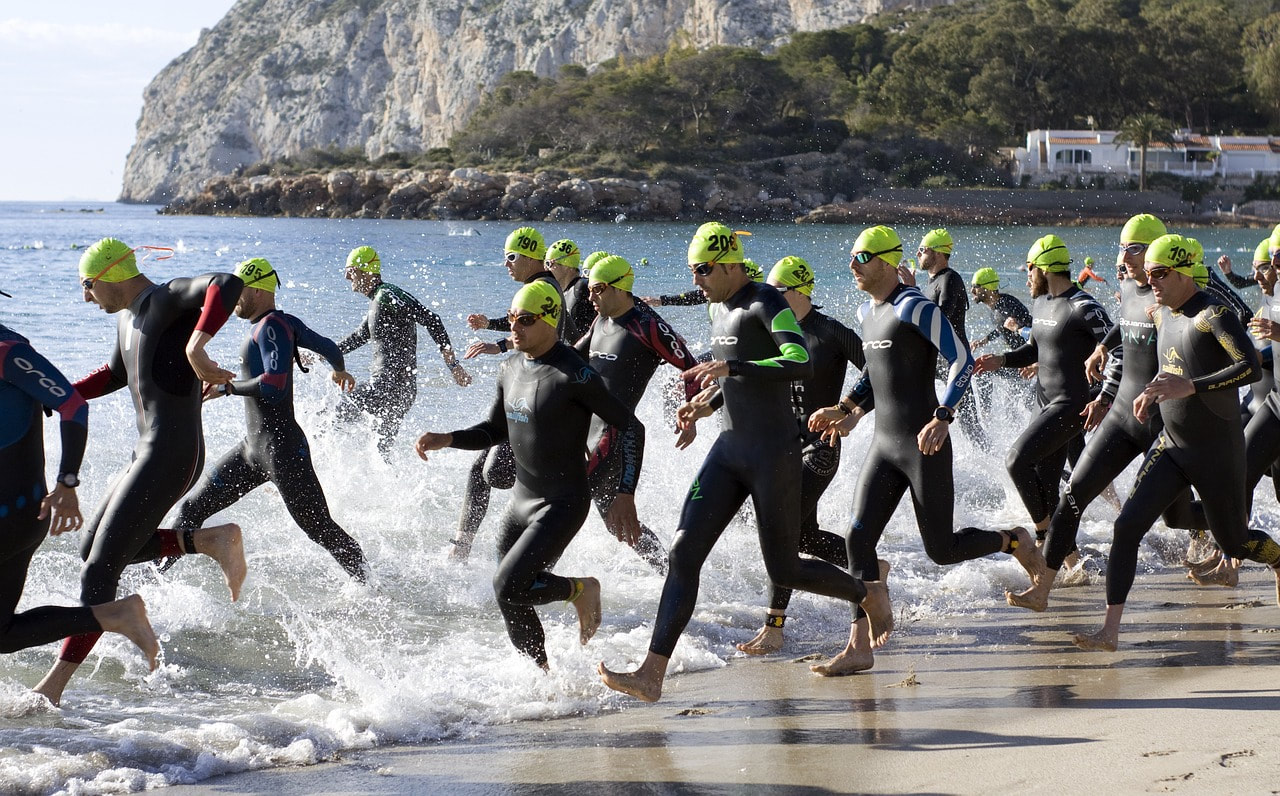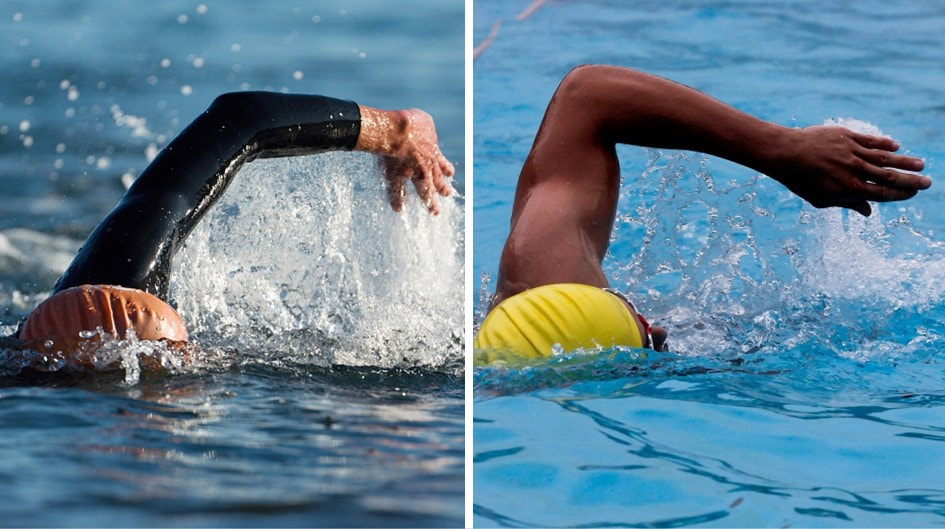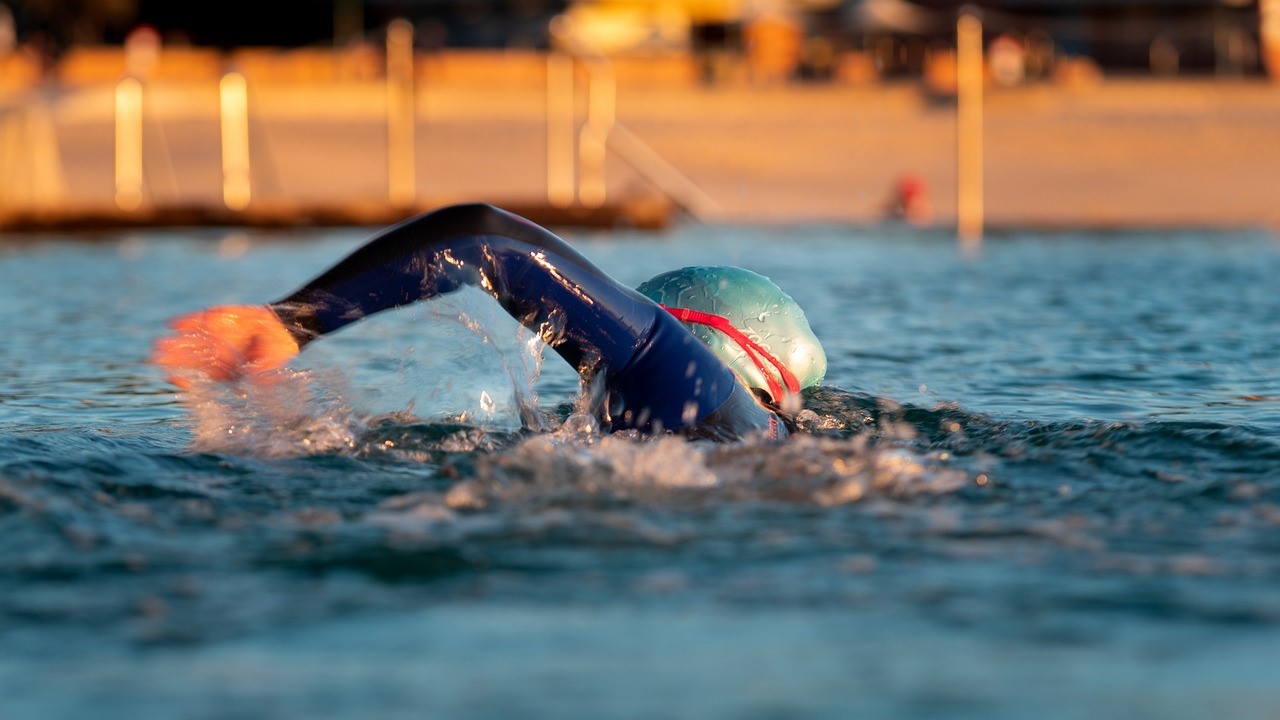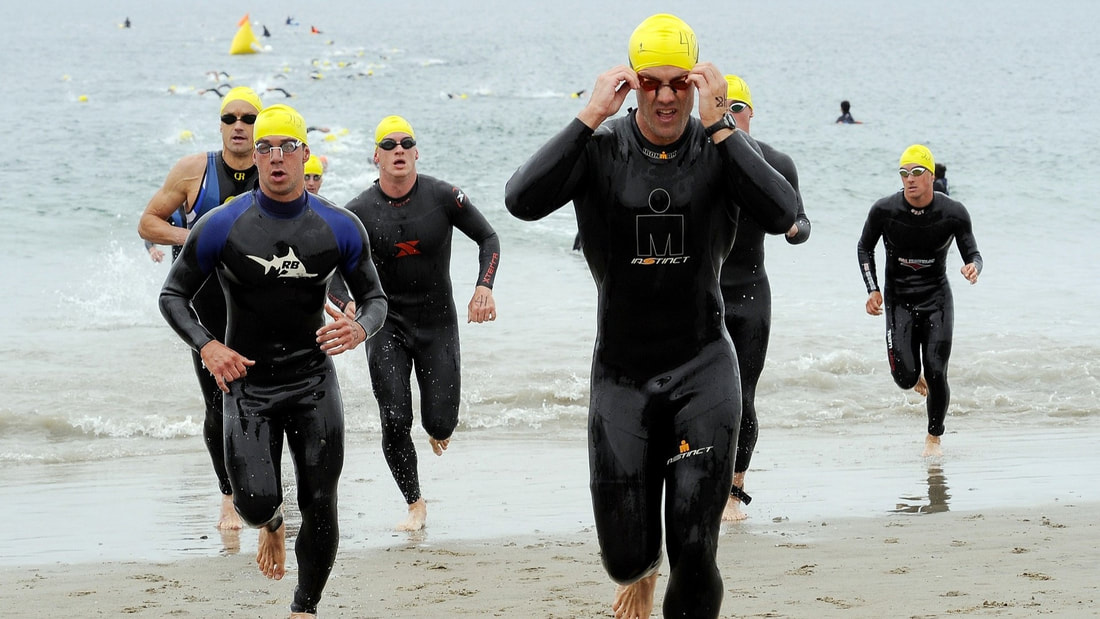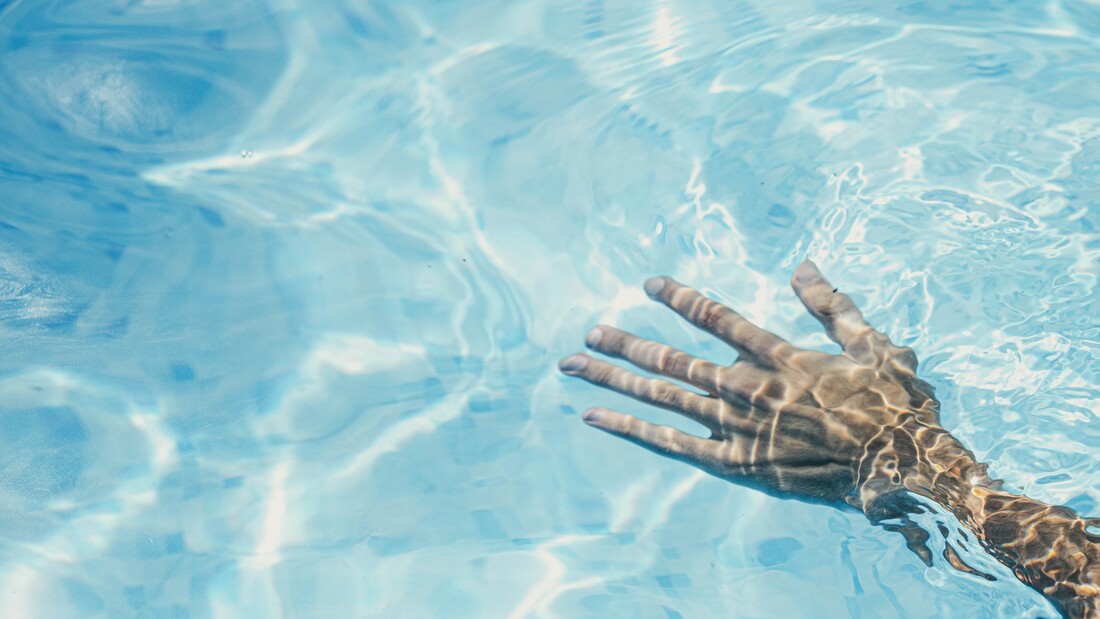|
As you dive into the world of triathlon training, a common question often arises: when it comes to training for the swim leg, what matters more—being fast or having stamina? It's a crucial element to figure out as you aim for your best performance. Striking the right balance between quick strokes for speed and a steady pace for endurance becomes super important in chasing that ultimate triathlon performance. Finding your balance between speed and endurance will make a big difference in how you approach your swim training strategy. Why not tailor your Strictly Swimming London lessons in developing your training on these two elements! The importance of Speed in your swim stroke Speed as a Competitive Edge In competitive triathlon, the importance of speed cannot be understated. A faster swim leg allows athletes to establish an early lead against competitors, setting a positive feeling for the entire race. Speed can be a valuable asset when navigating crowded open water starts, enabling triathletes to find clear paths in the water and avoid congestion. Faster Stroke Rate Required In choppy open water conditions, a faster stroke rate becomes crucial for swimmers seeking to navigate efficiently and maintain momentum. A fast stroke rate in swimming generally refers to the number of strokes a swimmer takes per minute. A higher stroke rate allows swimmers to adapt to the unpredictable nature of choppy waves, reducing the chances of being thrown off course or encountering resistance. The rapid arm turnover facilitates quicker adjustments to the changing water surface, enabling swimmers to maintain a smoother and more streamlined progression through turbulent conditions. Additionally, a faster stroke rate can enhance buoyancy and help swimmers stay afloat amongst choppy waves, contributing to overall safety and performance in challenging open water environments. Training for this will give you the edge over the rest of the field. Energy Conservation Surprisingly, speed can also contribute to energy conservation in the swimming leg of triathlon. Efficient and well-executed swim strokes can reduce the overall time spent in the water, potentially conserving energy for the demanding cycling and running legs that follow. This efficiency becomes less crucial in longer-distance triathlons where pacing is vital. Mental Advantage The psychological impact of maintaining a quick pace should not be underestimated. A strong start with swift strokes can instil confidence, positively influencing your mindset throughout your race. The mental strength developed through speed-focused training can create good resilience in the water during challenging moments of a triathlon. The importance of Endurance in your swim stroke Triathlon Endurance Requirement Triathlon, by its very nature, demands endurance. Completing a long-distance race involves pushing through fatigue in the later stages, making endurance a foundation of success. In the swim leg, endurance allows swimmers to maintain a steady pace, preventing burnout and ensuring energy reserves for the remaining disciplines. Building an Endurance Foundation Endurance training is not just about clocking up more miles in the pool but also about building a solid foundation of cardiovascular fitness. A well-conditioned cardiovascular system contributes to efficient oxygen utilization, delaying the onset of fatigue and enhancing overall race performance. Preventing Risks of Overtraining Emphasizing endurance in training can alleviate the risks of overtraining and injuries. Gradual and consistent increases in swim distances build resilience, reducing the likelihood of burnout or injury caused by overly aggressive speed-focused training. Striking the Balance between Speed and Endurance in Triathlon Swim Training The Middle Ground: Finding Optimal Speed and Endurance While the debate often frames speed and endurance as opposing forces, the reality lies in finding a appropriate balance. The ideal triathlon swim training program incorporates elements of both speed and endurance, recognizing that one complements the other. People often argue about whether speed and endurance in triathlon swimming are at odds, but the truth is, it's all about finding the right balance. The best training programs for the triathlon swim leg combines both speed and endurance, understanding that they actually work well together. Periodisation: Integrating both Speed and Endurance Cycles Adopting a periodization approach allows athletes to switch between speed and then endurance-focused phases seperately. This strategic variation in training prevents monotony, promotes adaptation, and ultimately enhances both elements. Our Strictly Swimming London coaches are here to educate you on training cycles and periodisation and offer training ideas. Technical Efficiency Improving your swimming technique is like building a bridge between going fast and lasting longer in the water. As a swimmer, when you develop good efficient technique, you will use less energy, which means you will be able to keep up a steady pace for a longer time. Doing drills, taking lessons, and getting coaching that focuses on technique can make a big difference in finding that sweet spot between speed and endurance. Conclusion In triathlon swim training, it's not a simple choice between speed and endurance – both are crucial. Successful triathletes know that they need a mix of both. Speed gives an advantage, but endurance ensures you can keep up a strong performance throughout the whole race. Finding the right balance means using periodization, improving your technique, and understanding that speed and endurance can work together in a training plan. Success comes from managing the relationship between speed and endurance, helping triathletes reach their full potential in the tough swim portion of a triathlon. Please talk to your Strictly Swimming London coach about focusing on both speed and/or endurance during your lessons. Front crawl, also known as freestyle, is one of the most popular swimming strokes and is a fundamental skill for both competitive swimmers and recreational swimmers. However, the technique for front crawl stroke can differ significantly when swimming in the controlled environment of a pool and in the unpredictable waters of open water or during triathlons. There are a number of considerations that can be explored between the differences of swimming pool front crawl stroke and an open water/triathlon front crawl stroke. There are various factors highlighting the unique challenges and adaptations required for each environment. Swimming Pool Front Crawl Stroke 1. The Controlled Environment: Pool swimming offers a highly controlled environment with clear water, consistent water temperature, and distinctly marked swimming lanes. Swimmers can focus solely on their technique without external factors affecting their performance. This controlled environment allows for the utilization of streamlined body position techniques that are often different from those used in open water. 2. Flip Turns and Wall Push-offs: In a swimming pool, swimmers perform tumble turns at the end of each length. This technique involves flipping over underwater, pushing off the wall, and continuing with the stroke. Tumble turns are not a part of open water swimming and are used to maintain momentum and minimize interruption in pool swimming. During a triathlon swim or open water swims, the swimmer does not have the luxury of gaining extra momentum by pushing off the wall and can only maintain momentum with the power, acceleration and endurance of their frontcrawl stroke. 3. Breathing: When breathing in the pool, the frontcrawl stroke typically follows a pattern where swimmers inhale every few strokes. This pattern can be regulated based on a swimmer's comfort and experience (whether this breathing every 2, 3, 4 or 5 strokes…) 4. Sighting: In pool swimming, there is no need to sight as the swimmer can easily follow the black line on the bottom of the pool. This eliminates the need for adjusting the stroke to accommodate sighting for navigation. 5. Starts and Turns: Pool front crawl stroke incorporates dive starts and streamline underwater phases following each turn. Swimmers in pool competitions use these to gain an advantage over opponents. Open Water/Triathlon Front Crawl Stroke 1. The Unpredictable Environment: Open water swimming takes place in natural bodies of water such as lakes, rivers, or oceans. The environment is unpredictable, with factors like waves, currents, wind, water temperature, and water quality affecting the swim. During Strictly Swimming London lessons, we can focus on overcoming these unpredictable external factors. 2. Navigational Challenges: Navigating in open water is a significant challenge. Swimmers must sight, or look forward, to ensure they are swimming in the right direction, as there are no pool lane markers. Sighting can disrupt the rhythm of the stroke. Again your Strictly Swimming London coach can tailor your lesson to concentrate on mastering this technique. 3. Sighting Techniques: In open water, swimmers utilize sighting techniques to ensure they stay on course. Sighting involves lifting the head out of the water to look forward. The frequency of sighting can vary based on the course's conditions, but it typically disrupts the rhythmic breathing pattern. 4. Wetsuits: In colder open water conditions, swimmers often wear wetsuits for insulation. The added buoyancy of a wetsuit affects body position in the water and may require adjustments to the stroke technique. At Nuffield Health Moorgate, we encourage our triathlete clients to bring their wetsuits to use during parts of the lesson and look at the variations that a wetsuit can impose on the frontcrawl technique. 5. Drafting: In open water events, especially triathlons, swimmers can benefit from drafting behind others. This involves swimming closely behind another swimmer to reduce resistance. Drafting requires adaptability in stroke technique and proximity to other swimmers. 6. Energy Conservation: Open water swimmers often aim to conserve energy since they have to navigate challenging conditions. Stroke efficiency and energy conservation become paramount, and swimmers may use a slightly different technique to achieve this goal. Key Differences in Stroke Technique 1. Body Position: In pool swimming, the emphasis is on a streamlined body position with limited body roll. Swimmers maintain a horizontal posture to maximize efficiency. In open water, body position may need to be adjusted for buoyancy, sighting, and to adapt to the impact of waves. 2. Leg Kick: The kick in pool swimming is typically strong and consistent, with a two-beat or six-beat kick pattern. In open water, swimmers often employ a more moderate and adaptable kick to conserve energy and maintain stability in rough waters. 3. Rhythm and Stroke Rate: Pool swimmers aim for a consistent, rhythmic stroke rate to optimize efficiency. In open water, the stroke rate may vary to accommodate sighting, navigation, and dealing with changing water conditions. 4. Breathing Patterns: Breathing patterns are flexible in open water to accommodate sighting. Swimmers may use bilateral breathing or adjust the pattern to suit their navigational needs. Pool swimmers typically maintain a regular breathing pattern. 5. Stroke Length: In open water, swimmers may shorten their stroke length to adapt to crowded conditions, avoid collisions, and maintain their course. This differs from pool swimming, where swimmers aim for longer, more efficient strokes. 6. Strokes per Breath: Open water swimmers may adjust the number of strokes taken per breath to optimize their breathing and sighting. In contrast, pool swimmers often maintain a consistent stroke-to-breath ratio. Training and Preparation Preparing for open water or triathlon swimming requires specific training beyond the standard pool regimen. Swimmers must practice sighting techniques, adapt their stroke to varied conditions, and learn to deal with the psychological challenges of open water, such as the lack of visibility and the absence of pool walls. Additionally, open water swimmers need to train in open water to acclimatize to the conditions they will encounter on race day. In summary, the front crawl stroke is a versatile and adaptable technique that can be used in both pool and open water settings. However, the environment and specific demands of each type of swimming necessitate variations in stroke technique. While pool swimming focuses on streamlined, efficient, and rhythmic strokes, open water swimming and triathlons introduce challenges like sighting, navigation, and adapting to unpredictable conditions. The key to successfully transitioning between these two environments lies in training and experience. Swimmers looking to excel in both settings must adapt their techniques and strategies to meet the unique demands of each. Whether you're a competitive swimmer, a triathlete, or simply an enthusiast, mastering both pool and open water front crawl strokes opens up a world of aquatic possibilities and allows you to embrace the diverse joys of swimming. At Strictly Swimming London, we can delve into any of the above topics during your lessons, whether it be sighting to streamlining or rhythm to rough waters. Swimming and triathlon are highly demanding sports that requires rigorous training to achieve peak performance. Swimmers and triathletes often push themselves to the limit to improve their speed, endurance, and technique. While intense training is essential for success, there is a fine line between effective training and overtraining. Overtraining in swimming can have detrimental effects on an athlete's physical and mental well-being, as well as their overall performance. Adult Swimmers and Overtraining Adult swimmers, like their younger counterparts, are also susceptible to overtraining due to several factors. These individuals, driven by personal goals, competitive desires, or even the pursuit of fitness, can sometimes push themselves too hard, often without the proper guidance. Adult swimmers may overtrain by increasing training volume or intensity rapidly, as their enthusiasm for improvement can lead to the misconception that more is always better. In many cases, adults juggle demanding work schedules (especially in London), family responsibilities, and other commitments, leaving them with limited time for rest and recovery. This can result in insufficient recuperation between workouts, making them prone to the physical and mental consequences of overtraining. Additionally, adult swimmers may lack the experience or professional guidance required to manage their training loads effectively, ultimately making them vulnerable to the perils of overtraining. Please contact Strictly Swimming London for a lesson if you feel that you are experiencing problems in your training, and we can offer advice. Understanding Overtraining Overtraining, also known as overtraining syndrome (OTS), occurs when an athlete's training intensity and volume exceed their capacity for recovery. It is a complex and multi-layered condition that can affect swimmers of various levels. Understanding the signs and symptoms of overtraining is the first step in preventing it. Signs and Symptoms of Overtraining
Causes of Overtraining Several factors can contribute to overtraining in swimming, and it's often a combination of these factors that lead to the syndrome. Identifying these root causes is essential for prevention and intervention.
Effects of Overtraining Overtraining can have severe and far-reaching effects on both an athlete's physical and mental well-being. These effects can not only hinder performance but also pose risks to an athlete's overall health. 1. Physical Effects
2. Mental and Emotional Effects
Prevention of Overtraining Preventing overtraining is paramount to an athlete's long-term success and well-being. Implementing these preventive measures can help maintain a healthy balance between training and recovery.
Recovery Strategies If an athlete is already in the grips of overtraining, it is crucial to implement recovery strategies to alleviate symptoms and return to a healthy state.
At Strictly Swimming London lessons, we can create a lesson to reintroduce you back into the pool after overtraining, we can advise you in your lessons on overtraining if you have been suffering from many of the above problems and we can look at a training programmes with the focus on preventing overtraining. In the world of sport and fitness, swimming, running, and cycling are three of the most popular cardiovascular exercises. Each activity has its own set of benefits and appeals to different individuals based on their goals, preferences, and physical conditions. All three sports can help you become healthier and fitter, however amongst these disciplines, swimming often stands out as the ultimate winner. It not only improves your heart and lung health but also has some unique benefits that make it different from running and cycling. All three of these activities work your muscles and make your heart stronger, but swimming has a special advantage because of the water's resistance and buoyancy. Swimming is good for your joints, gives your whole body a workout, and can help you relax mentally. These are benefits that running and cycling can offer but not to the same level as swimming. So, if you're looking for a lesson or exercise that's gentle on your joints, gives you a full-body workout, and helps you relax, please contact Strictly Swimming London and book a lesson and let us teach you on why swimming is a great choice for staying healthy. 1. Low-Impact Exercise: One of the standout advantages of swimming is its low-impact nature. When you swim, the buoyancy of the water reduces the stress on your joints, making it an ideal exercise for people of all ages and fitness levels, including those with joint issues or injuries. Running and cycling, while effective forms of exercise, can take a toll on the joints over time due to the repetitive impact. Swimming allows for a challenging cardiovascular workout without the risk of joint strain. Swimming stands out as a remarkably low-impact exercise that brings a wealth of benefits to the body, particularly to the joints and other crucial areas. Unlike high-impact activities such as running or even certain forms of weightlifting, swimming involves moving through water, which provides a cushioning effect that significantly reduces the stress on joints and bones. The buoyant nature of water is a key factor that contributes to the low-impact nature of swimming. When you're submerged in water, your body weight is supported, leading to decreased pressure on joints like the knees, hips, and ankles. This buoyancy not only lessens the risk of impact-related injuries but also allows individuals with joint conditions or those recovering from injuries to engage in exercise without exacerbating their discomfort. Moreover, swimming's fluid movements work in harmony with the body's natural range of motion. The water's resistance provides a gentle yet effective workout, engaging muscles without straining joints. This makes swimming an ideal choice for people seeking a cardiovascular exercise that enhances muscle strength while minimizing wear and tear on the body's framework. In addition to its joint-friendly attributes, swimming offers an overall workout that promotes balanced muscle development. The various strokes and movements required during swimming engage muscles from head to toe, encouraging overall body strength without placing undue stress on any single area. This comprehensive workout not only helps in muscle toning but also supports joint stability by ensuring that surrounding muscles adequately support them. Many people move from running to triathlon to try and get the balance of low impact sports in their weekly workouts. For those recovering from injuries or individuals with conditions like arthritis, swimming can serve as a valuable rehabilitation tool. The controlled environment of the water allows for gradual progression in intensity and range of motion, enabling individuals to regain strength and mobility while minimizing the risk of setbacks. 2. Full-Body Engagement: Swimming stands out for its ability to engage multiple muscle groups simultaneously. The resistance provided by water forces your body to work against it, resulting in a comprehensive full-body workout. In contrast, running primarily targets the lower body muscles, and cycling focuses predominantly on the legs. Swimming's various strokes, such as freestyle, backstroke, breaststroke, and butterfly, engage the arms, legs, core, and back, leading to balanced muscle development and improved overall strength. Swimming stands as an exceptional workout that engages and develops all major muscle groups in the body. As you glide through the water, the resistance it offers requires your muscles to work against it, leading to a comprehensive full-body workout. Different swimming strokes target specific muscle groups, ensuring a balanced approach to muscle development. Strokes like freestyle involve the arms, shoulders, chest, and back, sculpting the upper body. Breaststroke engages the chest, shoulders, triceps, and thighs. Butterfly challenges the core, back, shoulders, and legs, enhancing both strength and coordination. Backstroke strengthens the upper back, shoulders, and arms. Additionally, the water's resistance aids in toning muscles without placing excess strain on joints. Whether you're an occasional swimmer or a dedicated enthusiast, swimming's ability to target every muscle group makes it a versatile and effective way to achieve a well-rounded and balanced physique. 3. Cardiovascular Fitness: All three activities – swimming, running, and cycling – contribute to cardiovascular fitness by increasing heart rate and improving circulation. However, swimming has a unique advantage when it comes to breath control. Coordinating your breathing with your strokes enhances lung capacity and strengthens the cardiovascular system. This controlled breathing aspect adds an extra layer of benefits to swimming that sets it apart from running and cycling. 4. Calorie Burn and Weight Management: Swimming is a calorie-burning powerhouse. The resistance of the water requires more effort, resulting in higher energy expenditure. Moreover, the body's natural response to the cooling effect of water involves burning extra calories to maintain its core temperature. Running and cycling also burn calories effectively, but swimming's combination of resistance and temperature dynamics provides a distinctive advantage in calorie consumption and weight management. 5. Joint Flexibility and Range of Motion: The fluid movements of swimming promote joint flexibility and a wider range of motion. The stretching and reaching involved in swimming strokes help improve flexibility in the shoulders, hips, and spine. Running and cycling, though beneficial, lack the same level of joint flexibility enhancement due to their repetitive nature. Swimming is particularly valuable for those seeking to maintain or improve joint health while staying active. 6. Low Heat Impact: Swimming offers a refreshing reprieve from high-impact activities in warm weather. The water's cooling effect minimizes the risk of overheating during intense workouts. Running and cycling in hot conditions can lead to heat-related issues, making swimming a safer and more comfortable option when the sun is blazing. 7. Stress Relief and Mental Well-being: While all three activities trigger the release of endorphins – the body's natural "feel-good" chemicals – swimming provides an additional mental health advantage. The sensation of being in water has a calming effect, reducing stress and anxiety levels. The rhythmic and repetitive nature of swimming strokes can induce a meditative state, contributing to enhanced mental well-being and relaxation. 8. Rehabilitation and Injury Prevention: Swimming is often recommended for rehabilitation purposes due to its low-impact nature. It is gentle on injuries and can aid in recovery from conditions such as sprains, strains, and stress fractures. Additionally, swimming helps prevent injuries by strengthening muscles and improving joint stability. Running and cycling, while excellent forms of exercise, can sometimes exacerbate existing injuries or lead to new ones due to their impact on joints. We can tailor your lessons to reduce impact on your joints within your swimming strokes. Conclusion: Swimming, running, and cycling all have their merits and cater to different fitness goals. However, swimming emerges as a clear winner when considering its low-impact benefits, full-body engagement, cardiovascular advantages, joint flexibility improvements, and mental well-being enhancements. While running and cycling have their place in a well-rounded fitness routine, individuals seeking a workout that prioritizes joint health, muscle balance, and mental relaxation will find swimming to be an optimal and rewarding exercise choice. As always, consulting with a healthcare professional before embarking on a new exercise regimen is recommended to ensure it aligns with individual health conditions and goals, and we can monitor your swim Many of our Strictly Swimming London clients entering into our triathlon swim programme and lessons have seen the benefits of swimming on their overall fitness, see please contact us on info@strictly-swimming,com to book a lesson. Swimming technique plays a crucial role in a swimmer's performance and injury prevention. One aspect that has sparked debate among swimmers and coaches is whether to swim with open fingers or closed fingers. Swimming is a sport that requires precision and technique to excel in the water. Among the various aspects of swimming technique, the debate between open finger swimming and closed finger swimming has long been a topic of discussion. Open finger swimming involves keeping the fingers relaxed and slightly apart during the stroke, while closed finger swimming requires tightly clenching the fingers together. Both techniques have their proponents and claimed benefits, leading to a fascinating debate in the swimming community. Whether you are training for a triathlon or swimming to gain fitness, we can tailor your Strictly Swimming London lesson to develop the best hand position for you. Open Finger Swimming Swimming with open fingers, also known as "relaxed" or "loose" hand technique, involves keeping the fingers slightly apart during the stroke. This technique allows for a more relaxed and natural movement of the hand through the water, reducing fatigue and the risk of injury. One advantage of open finger swimming is the increased range of motion in the hand, wrist, and forearm, leading to greater power and propulsion. Additionally, open fingers can help prevent cramping, a common issue for swimmers using closed fingers. It is worth noting that "open finger swimming" refers to the fingers being slightly apart, not stretched wide apart. Closed Finger Swimming Closed finger swimming, also known as "tight" or "firm" hand technique, involves keeping the fingers tightly clenched during the stroke. This technique is often debated, with some swimmers believing it provides more power and control in the water. Closed fingers create a streamlined hand position, reducing drag and increasing speed and efficiency. The technique can also improve grip for sudden turns or maneuvers. Benefits of Open Finger Swimming
Benefits of Closed Finger Swimming
A study published in the Journal of Sports Science and Medicine compared elite swimmers using both open and closed finger techniques. The study found that closed-finger technique resulted in greater peak force and propulsion, while open-finger technique resulted in less finger muscle activity and more activity in the upper arm and shoulder, potentially reducing fatigue and injury. Another study in the Journal of Applied Biomechanics found that closed-finger technique produced greater peak force but also higher muscle fatigue. The study observed increased muscle activation in the fingers but also in the upper arm and shoulder. A 2020 study in the Journal of Sports Science and Medicine found that open-finger technique resulted in greater power output and stroke rate compared to closed-finger technique. However, closed-finger technique led to greater finger muscle activity, potentially enhancing muscle endurance over time. In conclusion, the choice between open and closed fingers in swimming is highly individual and depends on the swimmer's goals, experience, and physical abilities. Open fingers may be less fatiguing and less prone to injury, while closed fingers may provide more power and control. However, scientific evidence is limited, and swimmers should experiment with both techniques to find what feels most comfortable and effective for them. A combination of a slightly closed finger with a relaxed technique of open fingers may also be an option worth considering. Please feel free to discuss these techniques with your Strictly Swimming London coach during your lessons. |
AUTHORPaul started competing in swimming from the age of 8 and eventually went on to represent his country all over the world. During his time at University, Paul specialised in Aquatics and the Biomechanics of Swimming and produced numerous theses on swimming performance. TOPICS
All
ARCHIVES
June 2024
|
Let's connect!
Copyright © 2024 Strictly Swimming


